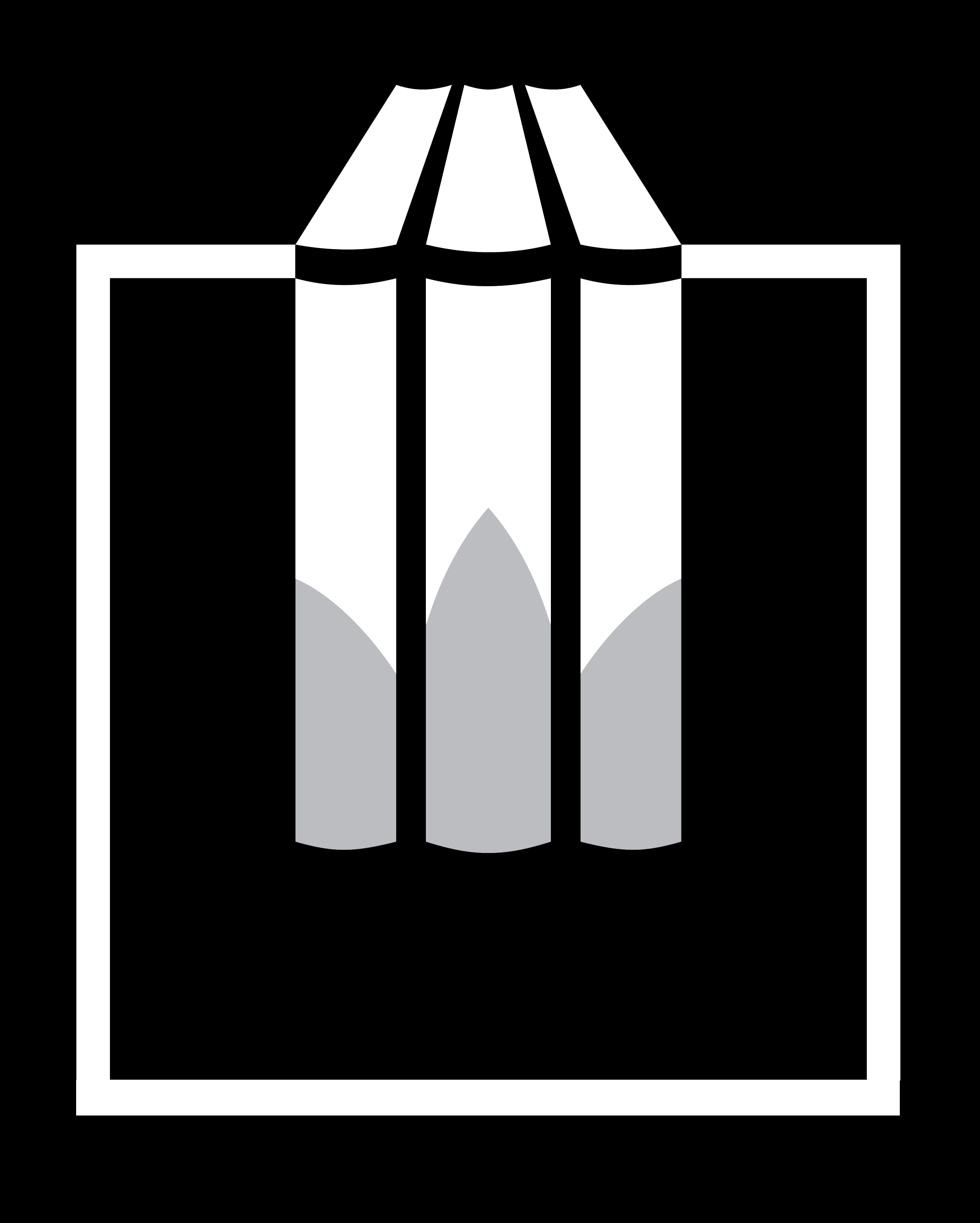Constantinople
Marcin Grala ![]()
Pontifical University of John Paul II, Kraków, Poland
(Old Greek: Κωνσταντινούπολις)—the capital of the Byzantine Empire, now Istanbul in Turkey. Constantinople was founded by Emperor Constantine the Great (324–337) on the site of the Greek city of Byzantion, located on the Bosporus and which was a colony of the Megareans in the 7th century BC. The new center of power was created as a result of the reform of the Roman Empire at the end of the 3rd and the beginning of the 4th centuries. Tetrarchy was established, and this entailed an increase in the number of sees for the corresponding top rulers (caesars and augustuses). They resided in the most sensitive areas of the vast state (Trier, Sirmium, Thessalonica, Antioch) or in places that guaranteed quick access to the dangerous frontier (Milan, Aquileia, Philippopolis).
Under Diocletian (284–305) in the eastern, more prosperous and populous part of the empire, Nicomedia became the seat of the ruler. Tetrarchy turned out to be a bad idea: the state plunged into civil wars, from which Constantine the Great emerged victorious in 324. The new ruler of the whole empire had to select a new capital in the east. He did not choose to reside in Nicomedia, but, appreciating the strategic advantages of Byzantion, located in southeastern Thrace, decided to turn this center into his new capital city (in addition to its location on the strait connecting the two great bodies of water, the Mediterranean and the Black Sea, via the Sea of Marmara, the city lay at the intersection of two important roads of a military nature: Via Egnatia and Via Diagonalis).
Probably as early as 324, work began to transform Byzantion into a new capital, which was named after the emperor. The city was greatly expanded; inaugural ceremonies were held on May 11, 330. Constantinople was originally characterized by all the features of a late antique city. The palace built by Constantine the Great and the Hippodrome gave it the character of a capital city. The shape of the city was influenced by geographical conditions and the city walls built by Constantine (eventually completed by Constantius II). The fortifications, which were located a few kilometers west of the tip of the peninsula, covered an area of about 6 square kilometers. The dynamic development of Constantinople made it necessary to expand the city’s borders in the early 5th century. During the reign of Theodosius II (408–450), new walls were built and located 1.5 km further west. Completed in 413, the fortifications stretched from Proptida to the Golden Horn, forming an arc of 6 km. The city’s area at the time was about 14 square kilometers. It was divided into 14 districts. It was claimed that Constantinople too—like Rome—was located on seven hills.

Through the center of Constantinople ran the main, column-decorated street (later called the Mese, or Middle Street), which still existed from the time of Septimius Severus (193–211). At the founding of the capital the street was extended, forming the central axis of the city. It began at the milepost called the Milion, then ran through the circular Forum of Constantine and the following squares of the capital: Forum Tauri, Forum Bovis and Forum Arcadius. Roughly 1.2 kilometers west of the Forum of Constantine was the Capitol, in front of which the street forked into two arms. One of them ran to the Golden Gate, located at the southwestern edge of the city, and the other headed northwest to the Gate of Charisius. Just beyond the Forum of Constantine, the Mese intersected with another important artery, which was Domnina Street. The emperor’s residence was the Great Palace, located in the eastern part of the city. It was built on Augustaion Square, near which were also the Hippodrome, the Senate building and the buildings of the Patriarchate headed by the Hagia Sophia temple. The palace complex was surrounded by a separate wall with the main Bronze Gate (Khalke).
Although there was no shortage of pagan elements in the city founded by Constantine the Great, the emperor made efforts to give the capital a Christian character. He funded several temples: the Holy Peace (Hagia Irene—originally the main church of the city), the Holy Apostles, as well as temples dedicated to St Acacius and St Mosius. His successors ordered the construction of more Christian temples, with the Church of Holy Wisdom (Hagia Sophia) as the most important, which took precedence after Hagia Irene, and was considered the most beautiful Christian temple after its reconstruction by Justinian the Great (518–527). During the first period of Constantinople’s existence, a number of other religious buildings were also built, including the churches of St Mary of Blachernae, Our Lady of Khalkopratos, Sts Sergius and Bacchus, St Polyeukt, as well as the monastery of the Studites along with the monasteries of Dalmatius and Chor monasteries. Dating back to the first half of the 5th century, a statistical description of Constantinople (Notitia urbis Constantinopolitanae) mentions the existence of 14 churches.

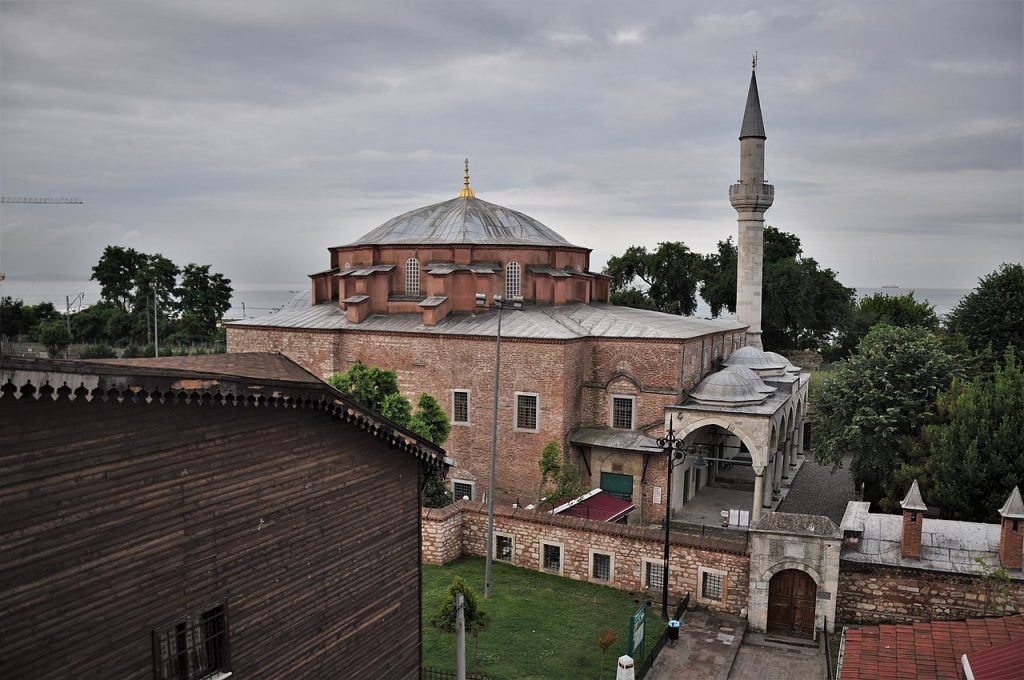
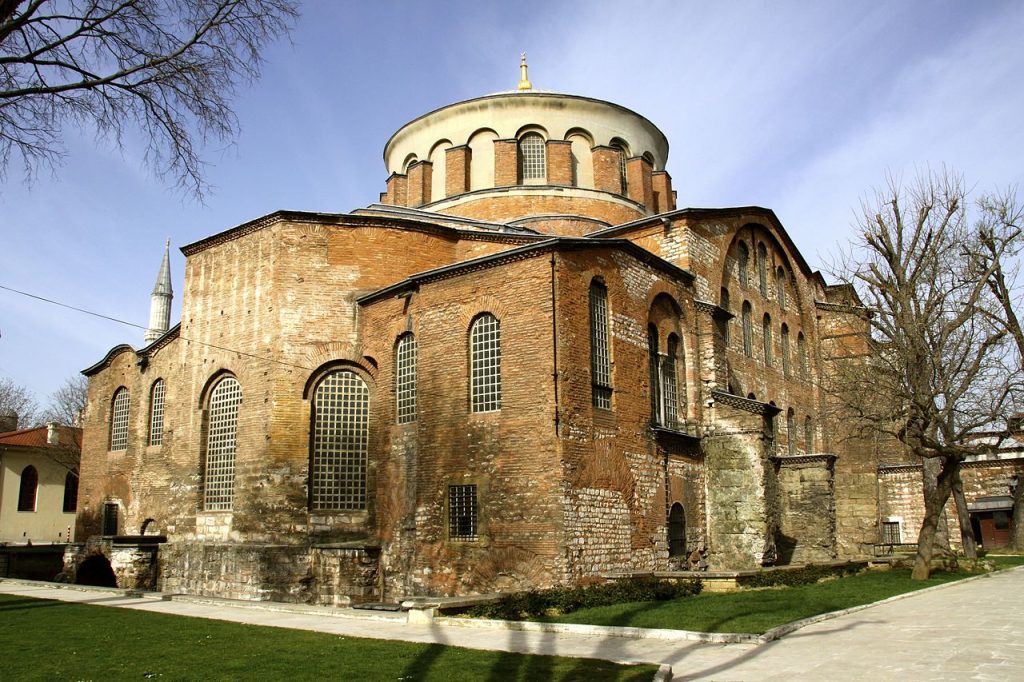
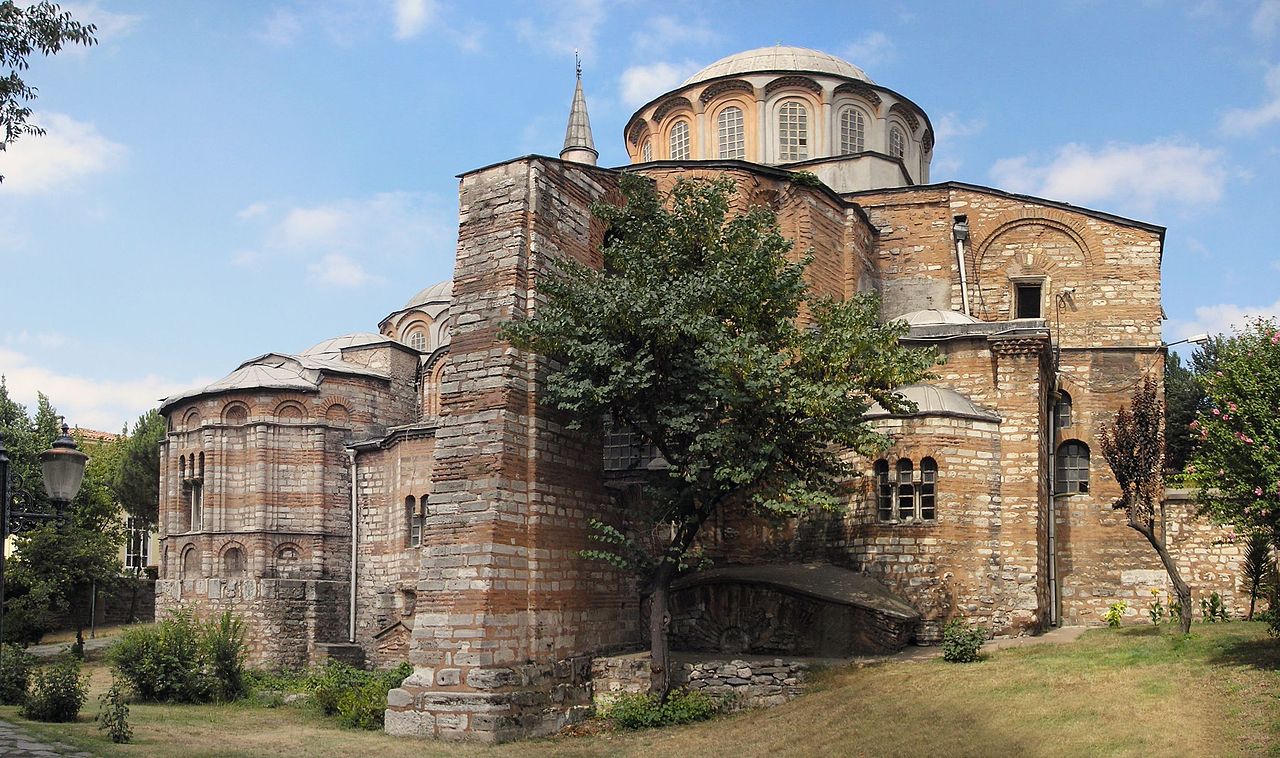
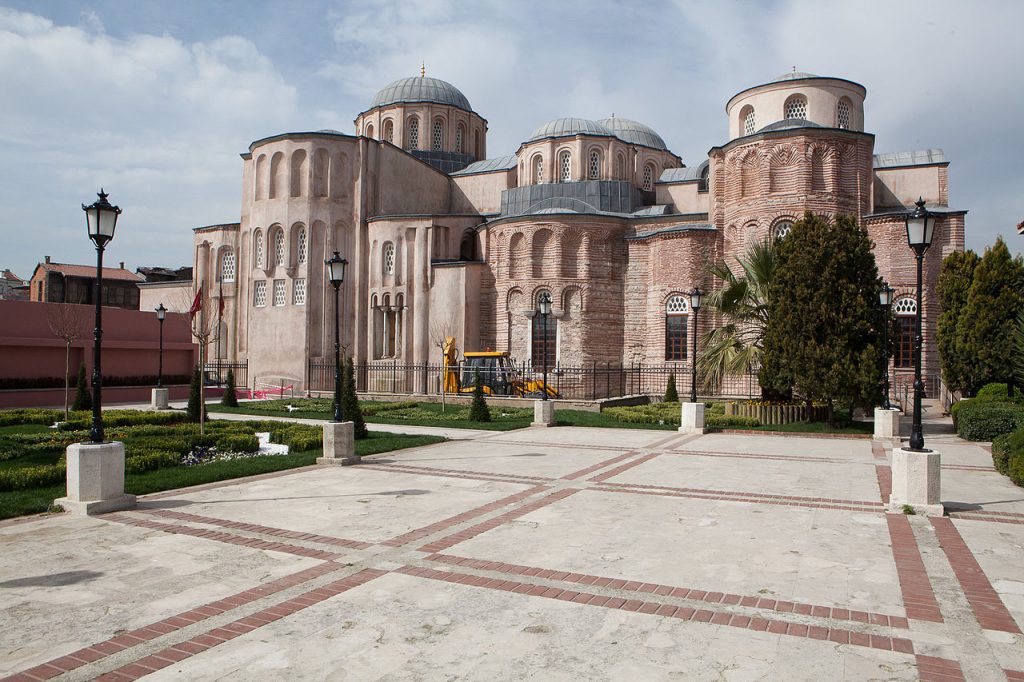
The dynamically growing city in its early days steadily increased its population. People were eager to settle there if only because of the bread distribution guaranteed by imperial decrees and other attractions offered by a capital-like center (games, baths). The city was not evenly populated. Particularly in the early 5th century, after the walls were moved westward, there were numerous gardens, cemeteries and outdoor cisterns within the capital. It is estimated that at its peak, Constantinople’s population may have reached up to half a million inhabitants. Such a large population required the creation of adequate infrastructure. In addition to the aforementioned cisterns, the water supply network and canals providing water for the city were expanded with the extremely important Aqueduct of Valens (373). Also the city’s ports were important for food supply. Even before the founding of Constantinople, Byzantion had two harbors located on the Golden Horn: Bosporion/Prosforion and Neorion. In the following years, under the emperors Julian the Apostate (361–364) and Theodosius I (379–395), two more ports were built on the Propontis coast. The grain imported (mainly from Egypt) was stored in granaries located to the north of the city. As a major port city, Constantinople was an important center of trade, in which the export of its own manufactures also played a insignificant role.
In founding the city, Constantine the Great made sure that the city was a capital comparable, to that of Rome. From 330, Constantinople began to be called “the new Rome” or “the second Rome.” On the model of the Eternal City, it also had its own senate and the institution of the prefect. The gradual decline of “old” Rome (sacked by the Goths in 410) meant that Constantinople’s stature grew. The increasing importance of the city translated into local ecclesiastical structures. Initially, the local bishop was subordinate to the metropolitan of Heraclea, but in 381 the First Council of Constantinople elevated the bishop of Constantinople to the dignity of patriarch, who was assigned the second position among other patriarchs after the bishop of Rome. The role of Constantinople in the Christian world is evidenced by the fact that in the early Byzantine period it was in this city or in its immediate vicinity that three universal councils were held: the aforementioned First Council of Constantinople (381), the Council of Chalcedon (451) and the Second Council of Constantinople (553). The city was an important center of theological thought, with learned clerics gathered around the patriarch, and libraries and scriptoria being created. Constantinople was also a center of secular learning. In 425, a university specializing mainly in law was founded on the Capitoline Hill.
From the beginning, efforts were made to secure Constantinople from invasion. The city, flanked on three sides by water, required only the construction of walls in the west. As mentioned, the first fortifications began to be built as early as the reign of Constantine the Great. During the reign of Theodosius II, it was decided to move the walls about 1.5 km to the west. Completed by 413. (partially preserved to this day), the fortifications successfully defended entry to the capital by the armies of enemies for centuries to come. Built by Theodosius II, the fortifications formed a six-kilometer-long belt of triple fortifications consisting of an 11-meter-high inner wall with towers erected at intervals of about 70–75 meters, along with a smaller outer wall also equipped with towers, and a moat. The fortifications enclosing the defensive ring directly protecting the city were also comprised of sea walls built along the Proptida and the Golden Horn. The date of their erection is not strictly defined.
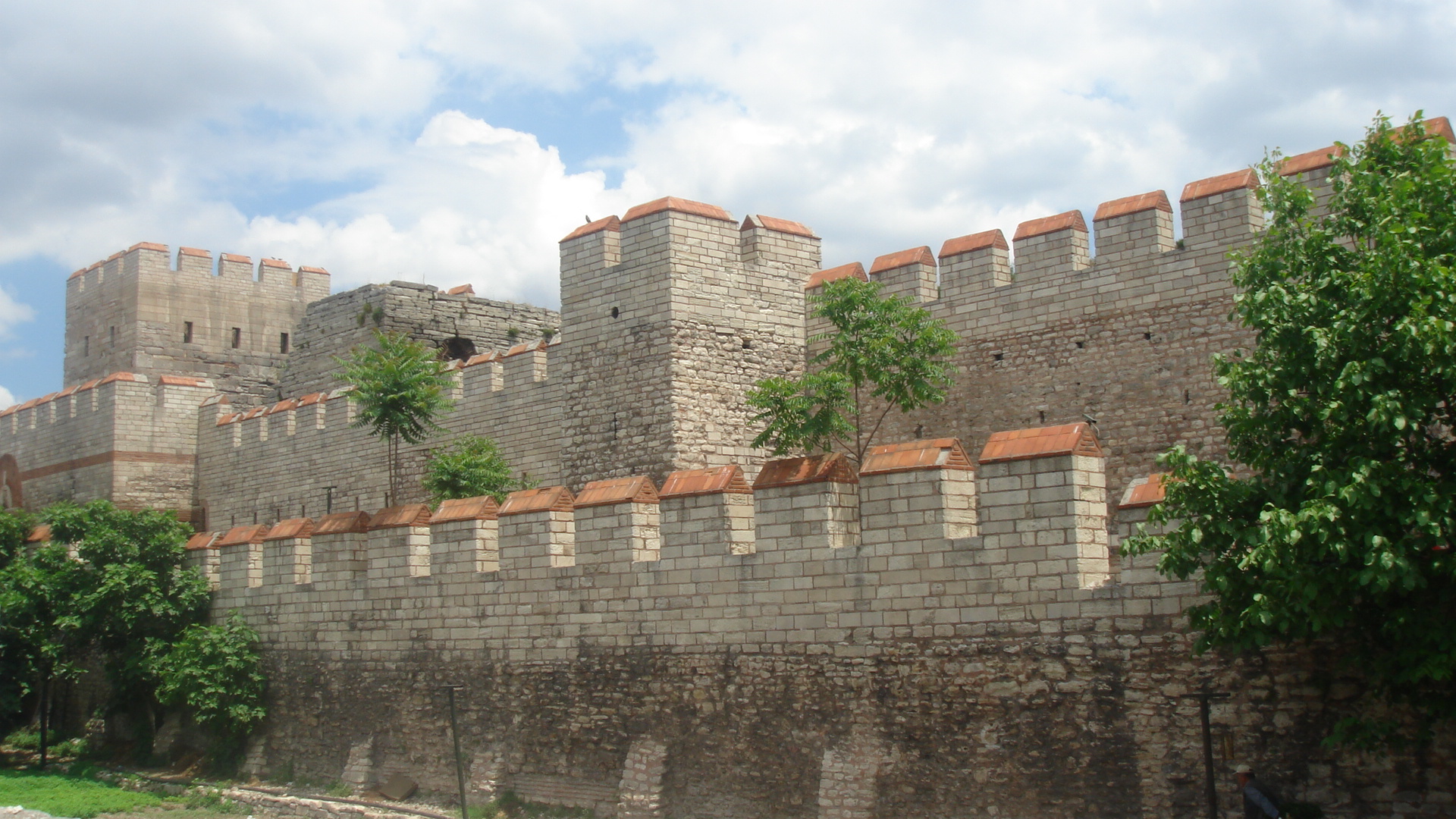
The defensive capabilities of Constantinople were completed by the Long Walls (Old Greek: Μακρὸν Τεῖχος), which were built during the reign of Anastasius I (491–518) and were located about 65 km west of the city. Despite the excellent protection of the capital from the outside, its inhabitants sometimes experienced disasters from which even the best fortifications could not protect them.
Constantinople was located in a seismically active area, and monumental buildings often collapsed due to earthquakes haunting the city. It was also not spared by fires, sometimes resulting from accidents (such as the great fire of 464, which consumed nearly half the city), and sometimes from riots that occurred in the city. Of great importance for the fate of Constantinople was the so-called Nika Riots of 532, as a result of which the center of the city was destroyed, which, thanks to Justinian the Great, was thoroughly rebuilt. It was at that time that the Hagia Sophia, which was admired and considered a model of a perfect temple over the following centuries, received a new look, as well as the churches of Hagia Irene, Sts Sergius and Bacchus and St Polyeukta. As a result of the bubonic plague that struck Constantinople in 542, the city’s population significantly decreased despite Justinian’s reconstruction and restoration. It is estimated that this dangerous disease claimed the lives of some 20–50% of the city’s inhabitants.
In Byzantine history the end of the 6th century and the 7th century are sometimes referred to as Dark Ages. This period also marked the end of the city’s dynamic growth. A drastic reduction in population was followed by high prices and a decline in production. The conquest of Alexandria by the Persians in 618 resulted in a lack of sufficient grain supplies, which limited Constantinople’s ability to grow its population. In 626, the imperial capital experienced its first major siege. The fortifications surrounding the city were unsuccessfully attempted by the Avars and Slavs acting in concert with the Persians. During the repulsion of the assault, an important role was played by Patriarch Sergius (610–638), who ordered the city’s residents to organize processions with icons of Christ and to raise prayers to the Mother of God. The successful defense was viewed by the capital’s population as a miracle, which reinforced the belief that Constantinople was under God’s protection. During the assault of 626, enemies damaged the systems supplying water to the city and destroyed its suburbs. Another attempt to capture Constantinople was made by the Arabs, who, appreciating the system of the city’s fortifications, decided to use a naval blockade that lasted from 674–678. These actions ended in defeat for the attackers, whose fleet was destroyed by “Greek fire.” The experience of the Arab blockade led Emperor Anastasius II (713–715) in 715 to order the departure of all residents from the capital, who were unable to accumulate food supplies for three years. Another Arab attack in 717–718 also proved unsuccessful. In 740, Constantinople was devastated by a major earthquake, which resulted in the collapse of much of the walls. During this turbulent period, another of the universal councils—the Third Council of Constantinople (680–681)—was held in the imperial capital.
The 8th and 9th centuries in the history of Constantinople were marked by iconoclasm. The activity against the cult of images, which began in 726 and lasted in two phases until 843, caused great damage to the culture. The fight against the cult of images was equated with the eradication of the remnants of paganism, so not only Christian icons, frescoes and sculptures were destroyed, but also many ancient monuments. By the end of the iconoclasm period, Constantinople probably had a population of tens of thousands. The city was clearly in decline, with many buildings of a public nature either neglected or destroyed. Gradual reconstruction was initiated by Empress Irene (797–802), who, distinguished by her sensitivity to the needs of the poor, founded shelters and a cemetery for them. Through the efforts of Emperor Theophilus (829–842), the city walls were repaired and the imperial palace was enlarged, and the work of renovating and rebuilding nearly 30 churches that had suffered from turbulent times is associated with the name of Basil I of Macedon (867–886). In addition to iconoclasm, at the time the empire was grappling with growing pressure from the Bulgarians, whose ruler Krum (†814) besieged Constantinople in 813.
After the end of the disputes over images in the Byzantine Empire came the time of Macedonian Renaissance. The cultural revival, which began in the mid-9th century, benefited the capital. During the Macedonian dynasty and the reign of the Comnenian dynasty, the Palaces of Mangan and Blachernae were built in Constantinople; the latter became the new imperial residence. New churches and monasteries were also built (the Monastery of the Pantocrator, the Myrelaiu monastery).
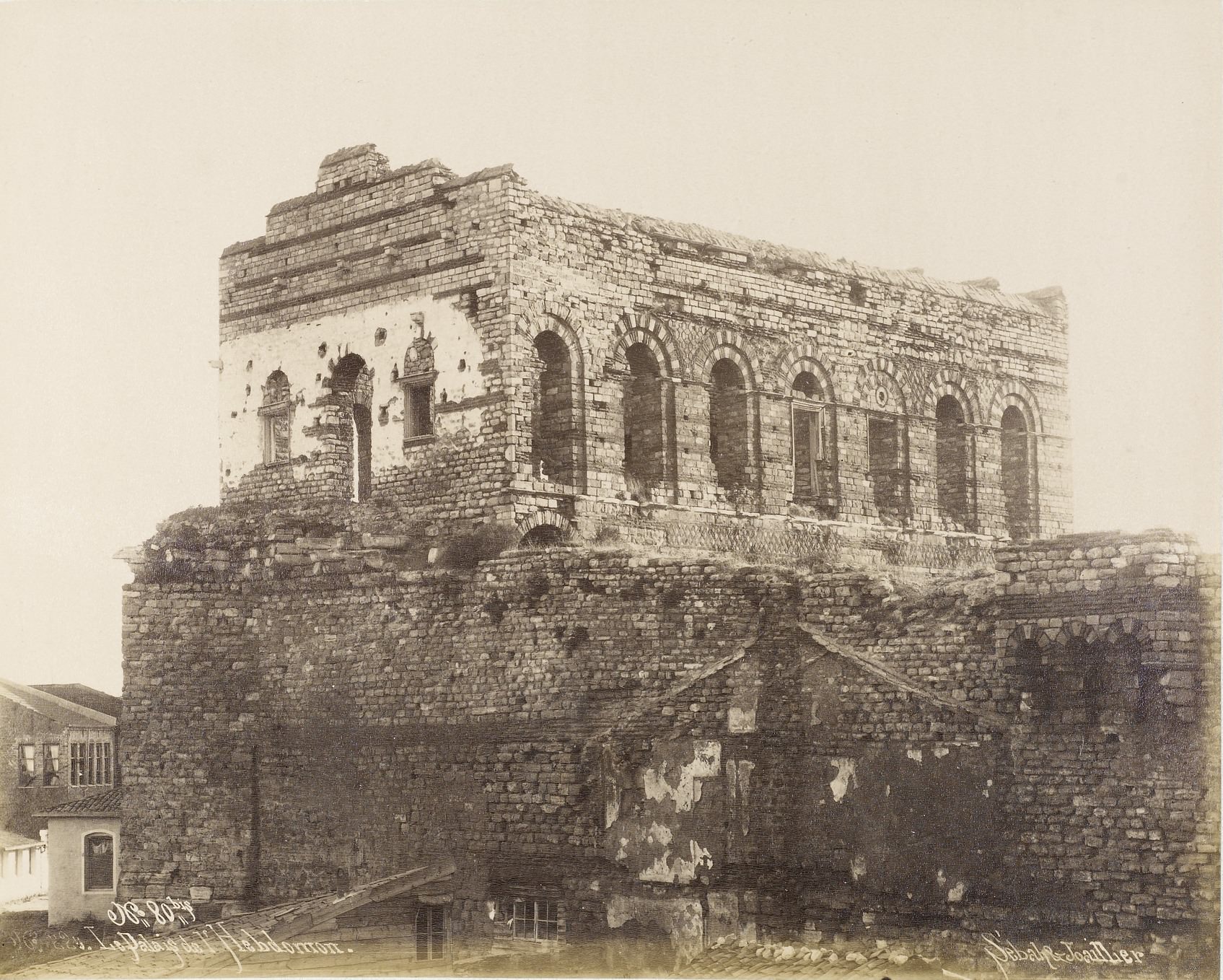
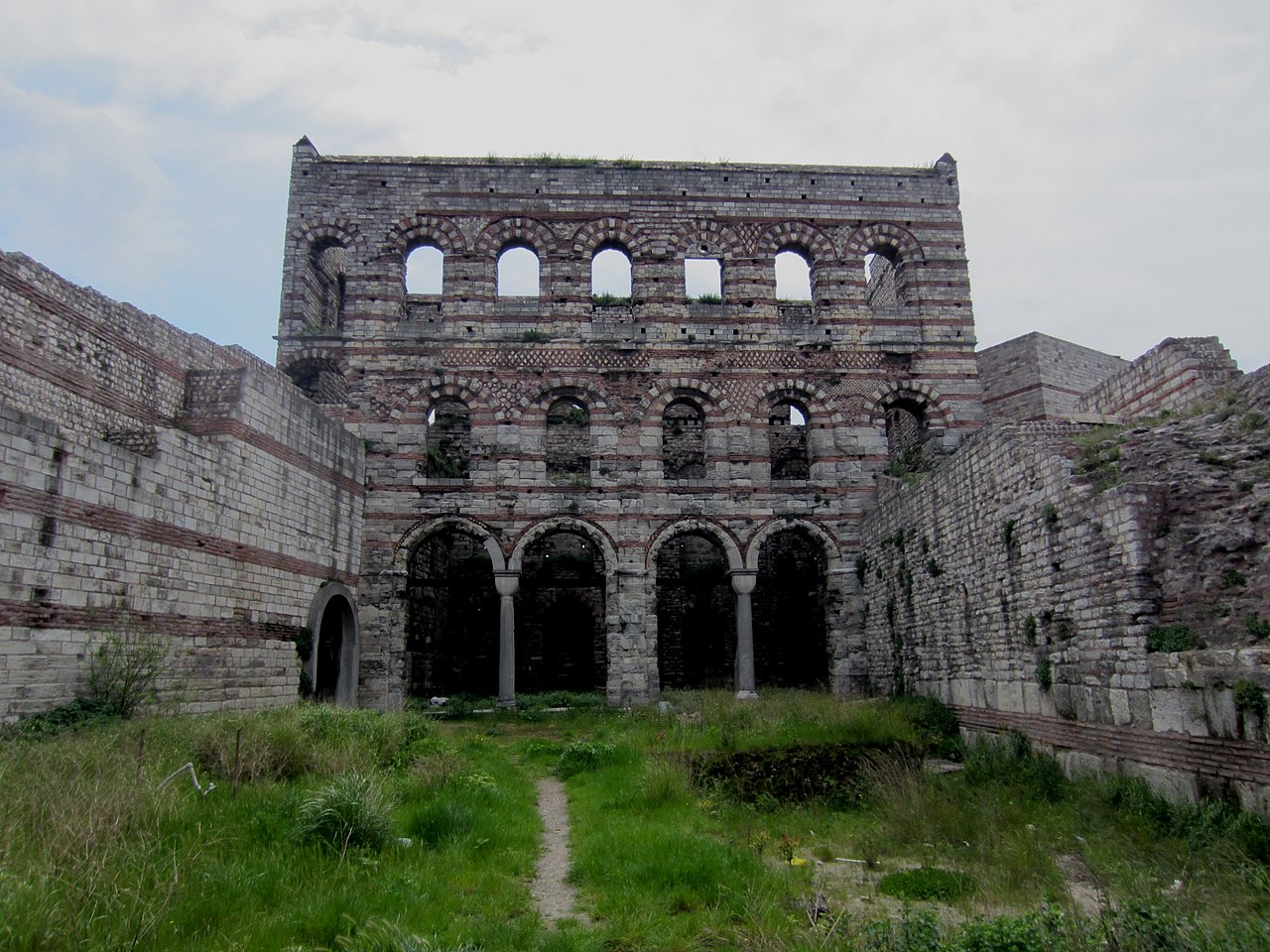

A special place was occupied by the Nea Ekklesia temple (Old Greek: Νέα Ἐκκλησία, consecrated in 880), erected at the Great Palace at that time, which presented the pattern of a five-domed building on the plan of a Greek cross, which was later imitated many times. The period from the mid-9th to 11th centuries was a time of renewed prosperity for the city, which was renowned for its beauty as well as its wealth. The records of The Book of the Prefect (or The Book of the Eparch), compiled in the early 10th century, depict Constantinople as a great center of trade and crafts. The process of the city’s development was not stopped by the invasions of the Rus’, who tried to conquer the capital in 860, 907, 941 and 1043. The final arrangement of relations with the Kievan princes initiated Byzantine-Ruthenian economic and cultural contacts, which further strengthened Constantinople’s position as an important point of trade in the eastern Mediterranean. In the 10th and 11th centuries, Italian merchants began to settle in Constantinople, first the Venetians and later the Genoese. In the 11th–12th centuries, through the efforts of both emperors and representatives of the aristocracy, a number of monasteries were founded in the city, which, in addition to their sacred functions, also engaged in charity and education. On the initiative of Romanos III Argyros (1028–1034), a monastery dedicated to the Virgin Peribleptos was built, Michael IV Paphlagonian (1034–1041) rebuilt a monastery dedicated to Sts Cosmas and Damian, and Alexis I Comnenus (1081–1118) expanded the orphanage at St Paul’s Monastery to impressive proportions.
The disintegration of the state, which occurred during the reign of the Angelos dynasty (1185–1204), culminated in the most dramatic event in the history of Constantinople, before its final collapse in the 15th century. During the Fourth Crusade (1202–1204), French and Flemish knights supported by the Venetians bravely stormed the hitherto unconquered walls of the Byzantine capital on April 12, 1204. The city suffered massive damage (about ⅙ of the buildings) from both the military action and the plundering activities of the conquerors. From 1204 to 1261, Constantinople served as the capital of the Latin Empire founded by the Crusaders. Under Latin rule, the city fell into further ruin. The new rulers undertook no major investments, and the former palaces of emperors and aristocrats occupied by Western knights were deteriorating. Trade still played an important role in the life of the city, but it was dominated by Venetian merchants.

In 1261, Michael VIII Palaiologan (1258–1282) recaptured a depopulated and ruined Constantinople and immediately began the work of rebuilding. He strengthened and enlarged the sea walls, which had been breached in 1204, and restored the Blachernae Palace, where the Latin emperors had resided for the last years. In addition, hospitals, asylums and churches were renovated on the emperor’s orders. To strengthen his position (Michael VIII seized power through a coup d’état), the ruler built a column with a bronze statue of the Archangel Michael, who was presented as the new patron and protector of the city. The work of rebuilding the capital, to which new residents gradually flocked, was continued by Andronicus II (1282–1328), as well as great aristocrats, such as Theodore Metochites (†1332), who restored the Church of Christ in Chora. Although during the reign of the first two Palaiologan, from 1261–1328, Constantinople flourished markedly, the imperial capital never again regained its former glory. This was largely the result of the increasingly difficult situation of the state, which was plagued by numerous internal conflicts despite the growing Ottoman threat.
In 1354, the Ottoman Turks captured Gallipoli, which became a bridgehead for further conquests in Europe. The expansion successfully carried out by successive sultans left Constantinople stranded and cut off from the remnants of the shrinking state. At the end of the 14th century, the Turks became increasingly bold in their efforts to capture the city. Between 1393 and 1401, a naval blockade of the capital continued, and in 1422 Murad II (1421–1451) attempted to breach its walls. The final blow to the imperial capital was dealt by Mehmed II the Conqueror (1451–1481), who in early April 1453 deployed an army of nearly 60,000 men supported by a fleet of 120 ships at the walls of Constantinople. The fortified city, which at the time had a population of about 50,000, was defended by a five-thousand-man Byzantine army supported by a two-thousand-man force of allies from Western Europe. The Ottomans began their siege of Constantinople on April 7. Initially they had a lot of trouble forcing through the capital’s massive fortifications, but these crumbled with each day of the assault. Particularly severe for the walls of Theodosius were the heavy shells, weighing nearly 600 kg, thrown by the huge bombard constructed by the Hungarian engineer Urbinus. Also unsuccessful was the attempt of Turkish ships to enter the Golden Horn, which was closed by a huge chain. In order to get into the bay, Mehmed ordered the construction of a land route through the hills behind Galata. Ottoman ships were pulled by carts on a specially prepared wooden structure and launched into the body of water from which Constantinople was fired upon. The sultan’s persistence and determination began to bear fruit. Despite the full determination of the defenders, among whom was Emperor Constantine XI (1449–1453), breaches began to appear in the strong fortifications, which could not be repaired in time. On Monday, May 28, seeing the inevitable defeat of Constantinople, the sultan gave his troops a rest before the general assault, which began early the next morning. After the first hours of fighting, in which the exhausted defenders still managed to fend off Turkish attacks, Mehmed threw a good-sized detachment of Janissaries into the battle.
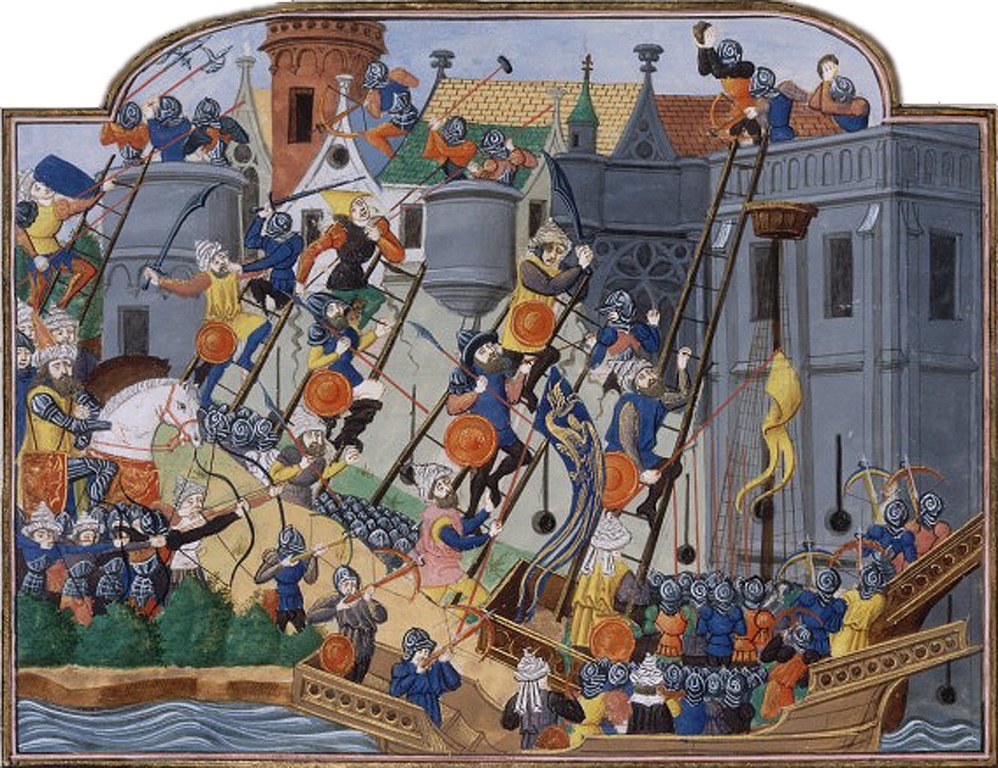
Soon a small group of Turks stormed through the Kertoporta Gate and took control of the Blachernae fortifications, over which the Ottoman banner was flown. Encouraged by this sight, the attackers intensified their assault, breaking through the fierce defenses of the Genoese, who, under Giovanni Giustiniani Longi, guarded a section of the walls near the St Roman Gate. The Turks broke into the city and managed to open more gates. After fierce fighting inside the city, in which the last Byzantine emperor fell, the city was captured around noon. Mehmed II the Conqueror triumphantly rode his horse into Hagia Sophia, which was soon tuned into a mosque. He then allowed his troops three days of merciless pillaging, after which he proceeded to organize his new capital in Constantinople. Soon, 5,000 Turkish families were brought to the city and a Turkish administration was established there, which began the process of its Islamization. Some historians believe that the date of the fall of Constantinople in 1453 closes the medieval era.
References
Angold M., Czwarta krucjata, tłum. B. Spieralska, Warszawa 2006.
Constantinople and Its Hinterland: Papers from the Twenty-Seventh Spring Symposium of Byzantine Studies, Oxford, April 1993, eds. C. Mango, G. Dagron, Aldershot 1995.
Downey G., Earthquakes at Constantinople and Vicinity, A.D. 342-1454, “Speculum” 1955, Vol. 30, No. 4, pp. 596–600, https://doi.org/10.2307/2849615.
Downey G., Constantinople in the Age of Justinian, Norman 1960.
Encyklopedia kultury bizantyńskiej, red. O. Jurewicz, Warszawa 2002.
Herrin J., Bizancjum. Niezwykłe dziedzictwo średniowiecznego imperium, tłum. N. Radomski, Poznań 2009.
Hurbanič M., The Topography of the 14th Region of Constantinople: A Critical Reexamination, [in:] Byzantina et Slavica: Studies in Honour of Professor Maciej Salamon, eds. S. Turlej et al., Kraków 2019, pp. 129–137.
Konstantynopol. Nowy Rzym. Miasto i ludzie w okresie wczesnobizantyńskim, red. M.J. Leszka, T. Wolińska, Warszawa 2011.
Mango C., Le développement urbain de Constantinople (IVe – VIIe siècles), Paris 1985.
van Millingen A., Byzantine Constantinople: The Walls of the City and Adjoining Historical Sites, London 1899.
Nicol D.M., The Last Centuries of Byzantium, 1261-1453, Cambridge 1993.
The Oxford Dictionary of Byzantium, Vols 1–3, ed. A.P. Kazhdan, New York–Oxford 1991.
Runciman S., Upadek Konstantynopola 1453, tłum. A. Dębnicki, Warszawa 1994.
Salamon M., Rozwój idei Rzymu-Konstantynopola od IV do pierwszej połowy VI wieku, Katowice 1975.
Świat Bizancjum, Vol. 1: Cesarstwo Wschodniorzymskie 330-641, red. C. Morrisson, tłum. A. Graboń, Kraków 2007.
Świat Bizancjum, Vol. 2: Cesarstwo Bizantyńskie 641-1204, red. J.-C. Cheynet, tłum. A. Graboń, Kraków 2011.
Świat Bizancjum, Vol. 3: Bizancjum i jego sąsiedzi 1204-1453, red. A. Laiou, C. Morrisson, tłum. A. Graboń, Kraków 2013.
Widuch H.J., Konstantynopol stolicą ekumenicznego patriarchatu 325-870, Katowice 1988.
Wolińska T., Konstantynopol i jego mieszkańcy widziani oczyma Liudpranda z Kremony, “Vox Patrum” 2008, Vol. 52, No. 2, pp. 1231–1242.
Sources of Images
1. Byzantium 1200, https://byzantium1200.com/tiles.html (educational use)
2. Wikimedia Commons, https://commons.wikimedia.org/wiki/File:Hagia_Sophia_Mars_2013.jpg (Arild Vågen, CC BY-SA 3.0)
3. Wikimedia Commons, https://commons.wikimedia.org/wiki/File:Sergius_and_Bacchus.jpg (fusion-of-horizons, CC BY 2.0
4. Wikimedia Commons, https://commons.wikimedia.org/wiki/File:ExteriorHagiaEirene340msu.jpg (Matthias Süßen, CC BY 3.0)
5. Wikimedia Commons, https://commons.wikimedia.org/wiki/File:Chora_Church_Constantinople_2007_panorama_002.jpg (public domain)
6. Wikimedia Commons, https://commons.wikimedia.org/wiki/File:Molla_Zeyrek_Camii.jpg (Sharon Nathan, CC BY-SA 4.0)
7. Wikimedia Commons, https://commons.wikimedia.org/wiki/File:Walls_of_Constantinople.JPG (Bigdaddy1204, CC BY-SA 3.0)
8. Wikimedia Commons, https://tr.wikipedia.org/wiki/Dosya:Tekfur_Saray%C4%B1,_Sebah_%26_Joaillier,1885.jpg (CC BY-SA 4.0)
9. Wikimedia Commons, https://tr.wikipedia.org/wiki/Dosya:Tekfur_Saray%C4%B1_(Palast_des_Kaisers),_Istanbul_-_panoramio.jpg (Martin Furtschegger, CC BY 3.0)
10. Wikimedia Commons, https://commons.wikimedia.org/wiki/File:Palace_of_the_Porphyrogenitus_2.jpg (Antoloji, CC BY-SA 4.0)
11. Wikimedia Commons, https://en.wikipedia.org/wiki/File:Eug%C3%A8ne_Ferdinand_Victor_Delacroix_012.jpg (public domain)
12. Wikimedia Commons, https://commons.wikimedia.org/wiki/File:Siege_constantinople_bnf_fr2691.jpg (public domain)
